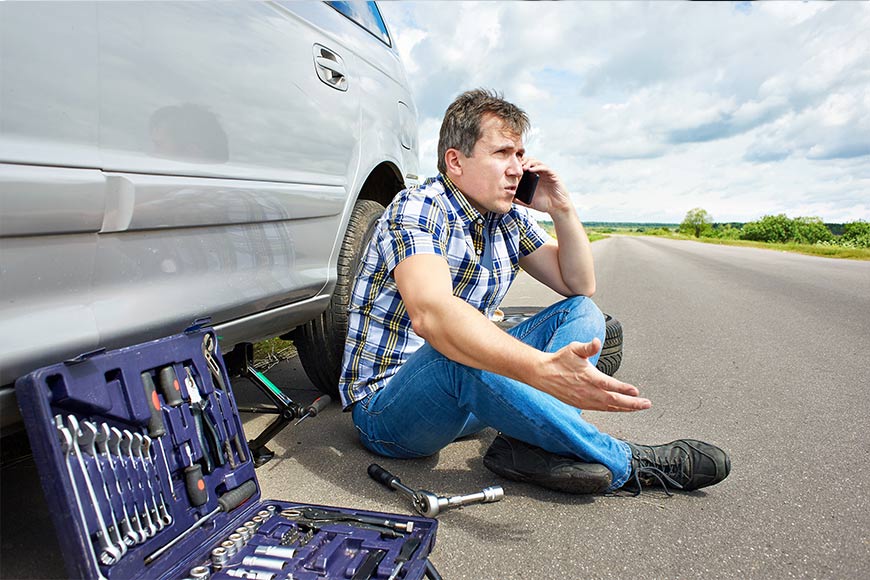
If you find yourself stranded on the road or need to help someone, it’s useful to know how car towing works under the new law. Since interpreting laws and regulations is not an activity many enjoy, we have prepared this text to break down all the articles of this law and explain to drivers the rules they should follow for towing vehicles under the new law.
Interpretation of articles on vehicle towing
Just like for other articles of the Traffic Safety Law, different rules apply to passenger and cargo vehicles, as well as to the type of road where towing takes place. This distinction is crucial for correctly understanding the regulations and avoiding potential problems during towing.
According to Article 69 of the law, up to two trailers may be attached to a motor vehicle if it is a cargo vehicle. In the case of a passenger vehicle, such as a car, only one vehicle may be attached. These rules are particularly important on highways and expressways, where attaching more than one vehicle is prohibited. For passenger vehicles such as buses, minibuses, or vans, it is important to note that these vehicles can only be towed under specific rules. For example, a passenger vehicle like a van can only be attached to a bus operating in public urban or suburban transport. This rule is essential because it ensures passenger safety and regulates the way transport is carried out, especially when the passenger vehicle has broken down.
Regarding cargo vehicles and agricultural tractors, the law sets additional rules. A tractor may tow other motor vehicles, including cargo vehicles, which is particularly important in rural areas or locations with limited access. However, no motor vehicle may tow a tractor. These rules help maintain road safety and reduce the risk of accidents, as tractors often have different driving characteristics and speeds compared to standard motor vehicles.
Adhering to these rules not only helps avoid fines but also contributes to overall road safety. It is always best to consult a professional towing service such as Towing Service Serbia Belgrade when you need to tow a vehicle to ensure you are acting in accordance with the law.
Under what conditions can vehicle towing be performed under the new law?
Car breakdowns often happen suddenly and may require immediate action to maintain road safety. Before calling a towing service, it is important to know how to act properly to reduce risks to yourself and other road users.
According to current regulations, towing a disabled vehicle on a highway or expressway is strictly prohibited. In case of a breakdown, the driver may tow the vehicle only to the first exit of the highway or expressway. This rule was established to prevent dangerous situations and ensure the smooth flow of traffic.
It is also important to note that a motor vehicle may tow another vehicle only when the other vehicle is unable to move on its own. According to the law, towing a motor vehicle is not permitted, which further emphasizes the need to follow regulations and ensure road safety.
In breakdown situations, it is always recommended to contact a professional towing service. They have the experience and equipment needed to safely remove the vehicle and can help you avoid potential problems. This way, you protect not only your safety but also the safety of all other road users.
What can be used to tow a motor vehicle?
The law has specific articles that clearly describe how towing can be properly carried out. According to these regulations, a disabled vehicle can be towed in several ways: using a rope, a rigid connection (also known as a bar), or by suspending/hooking the towed vehicle to the towing vehicle. However, it is important to understand when and which towing method may be applied.
A rope must not be used to tow a vehicle whose steering or braking systems are not functional. Also, ropes are not allowed for towing cargo vehicles or buses. When using a rigid connection, it is important to note that it must not be used for towing a vehicle without a functioning steering system, or for towing a vehicle whose total weight exceeds the towing vehicle’s weight.
Whether using a rope or a rigid connection, the driver of the towing vehicle must hold the appropriate license to operate the vehicle being towed. These rules are crucial for ensuring road safety and preventing accidents during towing.
How to safely carry out the towing procedure
Safety during towing is of paramount importance. Before starting the tow, check the towing equipment and ensure proper attachment between vehicles. The distance between vehicles should be optimal; a towing bar usually maintains a constant distance, while with a towing rope, a minimum distance of 3 meters is recommended. The towed vehicle must not exceed a speed of 40 km/h to ensure maximum control and avoid possible accidents. Turn on the signal lights on both the towing and towed vehicles, especially when towing in low-visibility conditions. Place a clearly visible towing sign so that other road users are aware of your situation. These steps will help you tow the vehicle as safely as possible.
For additional information or assistance with vehicle towing, feel free to contact Towing Service Serbia Belgrade. We are always here to help!
